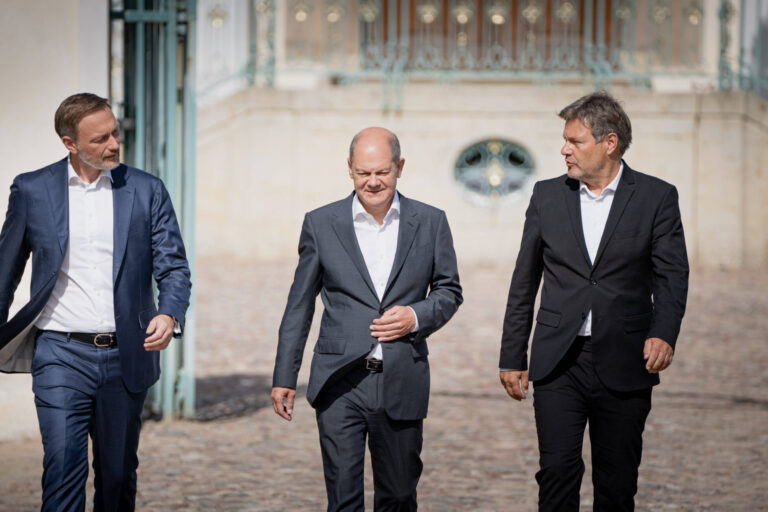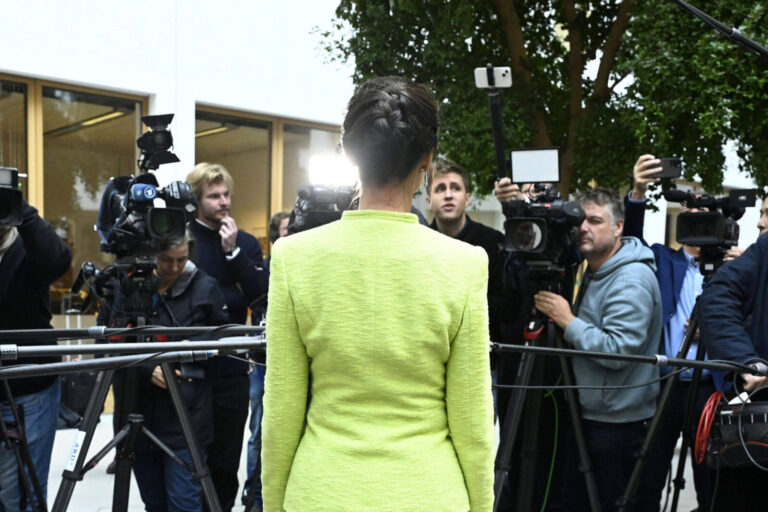How can a successful party of the future look like? Guillaume Liegey presents his ideas, that are workable within the existing party infrastructure and can provide a powerful source for inspiration for existing and future members as well as they can all be implemented in a reasonable amount of time.
What lessons might the political party of the future draw from observing startups in pursuit of profitable business models?
“We are all broken, every single one of us, and yet we pretend that we are not.” This is how one of the greatest Democratic party candidates once described the state of progressive politics in America in a convention speech.
Matt Santos – the Democratic party nominee in the sixth series of the political TV drama The West Wing – gave his speech 10 years ago. Yet the statement sounds just as relevant today to describe how most European progressive parties are perceived, both by insiders and outside observers. Something is wrong with progressive parties in Europe.
Like many established organisations, progressive parties have been challenged by the decline of their traditional ‘clientele’ and the rise of alternative players. For cab drivers, it is Uber and company. For political parties, these are Avaaz, Change.org, Podemos or the Five Star Movement. These organisations have created new civic engagement models that look more appealing to citizens of the 21st century. In doing so, they have fuelled the debate on the relevance and the survival of traditional political parties.
Let’s make it clear: I am convinced that political parties will survive. The question is how they can be better at capturing the tremendous demand for civic engagement. My answer is simple: they have to become indispensable organisations that provide indispensable services to their people.
I am the founder of a campaign strategy startup and for the past five years I have been following closely – and sometimes helping to implement – innovations in political campaigning. However the ideas that this paper goes on to discuss do not draw so much from my experience as a campaigner but rather as the founder of a startup.
What do I mean by startup? It is a company that has not yet found a successful business model but is in the process of addressing the right questions to eventually do so. And these questions are straightforward. Which problems do I solve, and are these problems important? Who are the people I serve, and how do I solve their problems? How are my solutions better than those of existing players?
All successful startups have found their answers to these questions and have become indispensable to their customers. Yet this does not seem to be the case for most political parties today. When political parties find their way to answer these questions – when they manage to define their missions and offer tools to fulfil them – they will gradually become indispensable organisations in the realm of progressive civic engagement.
In this paper, I suggest four issues for the party of the future to solve. I believe these issues are important and that progressive political parties are the best suited to tackle them. The mission of the party of the future should entail the following objectives, making such a party indispensable to society:
- To become the Greenpeace for social justice: effectively promoting a progressive agenda, starting redistribution and tackling inequality
- To launch a war machine to increase voter turnout in the long run
- To become an incubator for people who want to have an impact on society in line with progressive values
- To harvest all of the left’s talents to lead the government of the future
I believe each of these objectives is achievable and I am suggesting a first realistic, testable roadmap to reach them.
Becoming the Greenpeace for social justice: effectively promoting a progressive agenda, starting with redistribution and tackling inequality
In 2014, the French economist Thomas Piketty became the champion of redistribution when he published his book Capital in the 21st Century. He helped kick off a fierce debate on inequality and redistributive policies. The sudden fame of Piketty and his book’s impact came as a pleasant surprise for many progressives, who rejoiced in watching Piketty advocate for redistribution, in newsrooms, universities and banker’s conference rooms around the world.
Does it mean that the Piketty world tour was sufficient to ensure that inequality and redistribution are at the centre of public policy discussions? Among a few of Barack Obama’s economic advisers maybe. But when it comes to public opinion, the picture looks very different. Inequality is rarely the number one priority for a simple reason: most people underestimate it. This is true no matter how rich or poor they are or how equal or unequal their country is. Misperceiving Inequality, a fascinating study by economists Vladimir Gimpelson and Daniel Treisman compared people’s perception of inequality in their country with the actual degree of inequality. The results are stunning: everyone underestimates inequality. And it does not go without consequences for public policy: when people perceive inequality as a moderate problem, they are much more unlikely to accept redistributive policies.
We have more work to do to reach a consensus on the urgency of solving inequality, and this is a mission for the party of the future. Almost all progressive politicians – from the heirs of Blairism to the French frondeurs (rebels) via Matteo Renzi’s supporters – would agree that inequality is one of the key issues in progressive politics. Yet, no European social democratic party could be called the Greenpeace of inequality. Why is Thomas Piketty much more vocal and effective at doing the work of progressive parties? I cannot see any reason why progressive parties should not be better at pushing for a more redistributive agenda.
And it is possible to shape the political agenda. Conservatives have often proved it, from George W Bush’s campaign against the inheritance tax (relabelled ‘death tax’), to the UK Independence party and French Front National’s anti-EU and anti-immigration diatribes. In 2013, the Manif pour Tous (Demo for All) – opponents to gay marriage in France – built a powerful movement that reached beyond traditional conservative activists. They managed to hack the legislative process by slowing the debates in parliament and gained national exposure to defend their arguments.
As Gaël Brustier and David Djaïz have argued in an essay for the Paris-based Jean-Jaurès Foundation, I believe the party of the future can also win the battle of ideas and become an effective advocate of a progressive agenda, especially on redistribution. But this requires ‘getting out of the building’, a commandment for startuppers to remind them they will never find nor understand their customers while sitting in an office. They have to proactively engage with them. This holds true for political parties, whose members too rarely get out of the building.
Get out of the building to understand how people live and perceive inequality
Working on public opinion’s perception of inequality is necessary to create more acceptability for redistributive policies. Organising an effective advocacy campaign hence starts with understanding people’s perception. How? Well, opinion polls, studies and focus groups are of course one way to go. But they are not enough. What do startups do to understand their public’s needs? They get out of the building and talk first-hand and spend time – a lot of time – with their customers, so that they end up thinking and feeling like they are one on them. Everybody in the company has to engage with customers at some point, not just salespeople.
For political parties, getting out of the building means sending as many party activists as possible to engage directly with citizens at their doorsteps to conduct a qualitative field survey. This survey can be targeted at specific demographic groups or at neighbourhoods with a high electoral potential. Gather a group of 20 activists and after a week of door knocking, they will have had a five- to seven-minute conversation with 1,000 people; ask them to let themselves become immersed in people’s lives, to remember individual stories and quotes on how what inequality means to people. It is worth emphasising that at this stage the intent is to collect information, not to start advocating for more redistributive policies.
Draft arguments that stick
Once you have a better understanding of what people think, you can start drafting the arguments for your campaign. The science of effective arguments is complex. What parties often do is assemble a sales pitch with a list of supposedly striking figures. They use them to bombard their opponents in televised debates, with little lasting effect on the audience. A successful advocacy campaign makes its arguments stick with the audience. How? Arguments that stick combine simplicity, unexpectedness, concreteness, credibility, emotions and stories, according to the bible of sticky arguments, the book Made to Stick, by Chip and Dan Heath. The way that the authors reshuffle the argument to convince that America spends too little on foreign aid is enlightening. Made to Stick should become the bedside reading of any politicians of the future.
Communicate effectively
The ultimate question is the channel of communication. How to reach people you want to convince? The key is to ensure the party reaches far beyond its core members and supporters, who are highly likely to share the same beliefs and do not need to be convinced. Successful advocacy campaigns combine targeted and non-targeted communications, from door-to-door sessions organised by party activists to politicians sharing their sticky arguments on TV and through all imaginable progressive platforms. There are many examples of such campaigns; look, for example, at the British member of parliament Stella Creasy’s campaign on payday loans. Imagine how powerful a campaign would be if it combined politicians on TV, powerful op-eds in national and local newspapers and thousands of party activists knocking at doors, all bombarding public opinion with sticky arguments on inequality.
Which goal should such a campaign set? Successful startups demonstrate three-figure growth rate. Let’s start with a humble and realistic objective: to increase by 10 percentage points within two years the share of citizens who answer “yes” to the question “Should government’s policies be more redistributive?”
Running a war machine to increase turnout in the long run
All democracies face a decline in turnout, which affects all ballots, from low salience local elections to presidential races. Non-voters represent such a large share of the electorate that get-out-the-vote (GOTV) operations are now part of every campaigner’s toolkit. Today, we do know one tactic that usually works to increase turnout for elections: knocking at doors. The first evidence of the power of direct interaction came from the seminal work of Alan Gerber and Donald Green. Their randomised control trial in New Haven in 1998 opened the way for the comeback of door-to-door canvassing in US campaigns and later on in many European countries. But, as great as the impact of door-to-door can be to mobilise voters for an election, it can only be a short-term solution. Too often, canvassers disappear right after election day and rarely come back before the next cycle. This is obviously insufficient to tackle the long-run decline of turnout.
What is required is to create sustainable political engagement among citizens who stopped voting or never have voted, and who doubt the ability of politics to effectively solve their problems. An increasing number of citizens feel that politics is a foreign and distant world and politicians are unable to understand their concerns and expectations. If you feel politics is powerless and ignores you, why indeed bother voting?
The party of the future should find a more sustainable solution to foster political engagement. How? Force its members to get out of the building!
Get out of the building (again)
The party of the future would make it a rule that its members spend 70 per cent of their activist time engaging with people outside of the party. In France, several local units of the Socialist party have established weekly door-to-door sessions outside of campaign periods. Members promote the activities of their unit, provide information on government reforms and occasionally (though this is never a priority) recruit new members. A nationally coordinated advocacy campaign on inequality could easily provide a great alibi to get out of the building. The same rule should apply to elected officials, from local councillors to members of parliament, and become a routine in their weekly schedule.
Other formats could be experimented with, like small town hall meetings where a politician would have the opportunity to engage in a conversation with no more than 10 citizens. The governing principle for the conversation should be kept simple and strict: citizens talk 80 per cent of the time, the politician 20 per cent. The key success factor of this format is the selection of the group of citizens: they cannot be party members or supporters but are chosen because they do not easily have access to politicians. Conversely, many politicians lose touch with citizens once elected, not because they enjoy the ivory-tower atmosphere but because political offices schedules are very demanding and do not make field work a basic requirement. The party of the future can help by organising these small-group conversations.
Another idea would be to send politicians to schools in low-turnout areas and have them explain why they engaged in politics and why it matters to them. It should not necessarily replace more formal civic education classes but provide a more personal perspective on why political engagement, starting with voting, matters. “To be ashamed of miseries you did not cause” – this is how Donald Berwick, a candidate for the Democratic primary for Massachusetts’ gubernatorial election in 2010 described what drove him to public service and political engagement. A line like this one might stick better in one’s mind than the explanation of the rationale behind the separation of powers.
The party of the future could launch experiments with these ideas and scale up those that work, primarily in the lowest-turnout neighbourhoods. And it should again set a humble and realistic goal – how about increasing turnout by five percentage points over two years in neighbourhoods with the lowest turnout?
Becoming an incubator for people who want to have an impact on society in line with progressive values
Many community organisations promote political engagement and offer an alternative approach to traditional politics (see for example the Leading Change Network, the Movement for Change or the ‘transition’ movement). This does not mean that political parties should see them as competitors on the civic engagement market. Potential synergies between political parties and community organisations are immense.
What could the party of the future do for organisers and activists? What do they need to promote their cause? Training, checklists, toolkits, funds (a little), encouragement (a lot) and sometimes a little push for publicity. Political parties have expertise on most of these dimensions and a unique asset to offer: scale. In a nutshell, the party of the future can act as an incubator and help community organisations reach a scale very few of them are likely to reach on their own. It can help connect community organisations to party members and supporters willing to start a fight together. It can help raise funds since they have access to a precious database of politically engaged citizens. It can help generate publicity for selected community organising projects and promote them at the national level, something a local community organiser would struggle to achieve alone.
Conversely, the party of the future could work with them to reach out to citizens who feel abandoned by politics and partner with organisations that aim – for example – at increasing turnout, like Rock the Vote in the US. Also, it remains quite a challenge to make community organising accessible to a wider group of citizens. Educated and politically engaged citizens are usually more susceptible to organise to defend their ideas and they are very likely to have access to policymakers. The party of the future should ensure that less politically connected citizens also benefit from community organising expertise and offer joint training programs with community organisations, with a specific effort to reach out to citizens in neighbourhoods where political and civic engagement is limited.
Becoming an inclusive incubator for community organising projects is a great way for parties to become indispensable to organisations they collaborate with and to their own members. I am convinced many of them would be keen to find opportunities to engage in civic projects beyond the traditional party activities. For example, in France several NGOs work to support asylum seekers while their application is reviewed. In many cases, they do not have any housing options and the state does not provide any solutions during the application review. NGOs recruit families who are willing to host one asylum seeker for a short stay, usually five weeks. Why could the French Socialist party not offer to connect these NGOs with their members who are willing to help?
When the party of the future becomes a successful incubator, not only will it be seen as more indispensable but it will also send a great signal to those who think politics is disconnected from reality since it will have many examples of actual – and positive – impact on people’s lives.
Harvesting all the left’s talents to lead the government of the future
One of political parties’ core missions in a democracy is the supply of political leaders. There is a clear discontent with political leaders today, which suggests that selection is part of the problem. Over the years, defiance towards politicians continues to increase: 89 per cent of French citizens think politicians do not care about their expectations, a 40-percentage-point increase since the 1980s. In the UK, citizens say they trust politicians less than bankers. Similar statements could be made across Europe.
One explanation is that political parties struggle to attract talents and diversify the profile of their candidates. Leading the government of the future will require new skillsets and experience that extends beyond navigating the maze of internal party politics. But there is still a glass wall between career politics and other careers. How can the party of the future bring more diversity among their own candidates? It should do what startups do when they look for talents: they go headhunting. It should proactively search for people with an interesting background, approach them, and offer to coach them before they stand for office.
Though the perfect candidate cannot be manufactured from scratch, the party of the future could do a lot to pick out promising talents and coach them to become great candidates and, if elected, great political leaders. To design an effective curriculum, it can look at successful examples in the United States, with the Wellstone Institute and the New Organizing Institute. Both offer high-quality training, building on a long experience of running campaigns and working with progressive politicians. The party of the future could first set up a partnership with these organisations and send a small group of 10-15 candidates to take part in training sessions in the US, before developing their own programmes internally.
It should also set a clear, measurable objective and for example save 25 per cent of their seats for these profiles, not only in constituencies where they are unlikely to win. And this could be done at any level: municipal, regional, national. To limit the resistance against what could be perceived as ‘parachuting’, these candidates should be chosen locally whenever possible and, if not, local party organisations should be involved in the selection process. The coaching curriculum should include field activities with local party activists.
The party of the future can also help politicians already in office become more innovative and organise regular international study tours, a very powerful way to discover innovations and get energised about them. These study tours are not the same as traditional ministers’ visits. They are designed to be working trips, with very specific interview guides to collect information. Two years ago, it is during such a study tour that I discovered Enroll America. This non-profit organisation, led by Anne Filipic, was set up to assist the implementation of the Affordable Care Act. Enroll America has been using many lessons from the Obama campaigns, from predictive modelling to target eligible people to campaign techniques, from neighbourhood meetings to door-to-door canvassing. They have worked to inform eligible people about Obamacare and explain how they can benefit from the reform; enrolment campaigns organised by Enroll America have helped insure more than 11 million citizens. If politicians and policymakers in France and Europe were more aware of such initiatives – if they could feel the passion of those who started them – they would be energised and more likely to experiment with similar projects at home. I am not certain that everything would work but it would help spur a more open state of mind – one more prone to experiment.
To current and prospective party leaders, I would conclude by saying that these ideas can all be implemented in a reasonable amount of time. They are workable within the existing party infrastructure and can provide a powerful source for inspiration for existing and future members. Another great fake politician, President Jed Bartlett, once said: “Never doubt that a small group of thoughtful committed citizens can change the world.” Let’s make sure the party of the future is the choice of preference for such people.
This article was first published on Policy Network and recently in the book „Aiming high“ by Florian Ranft.





